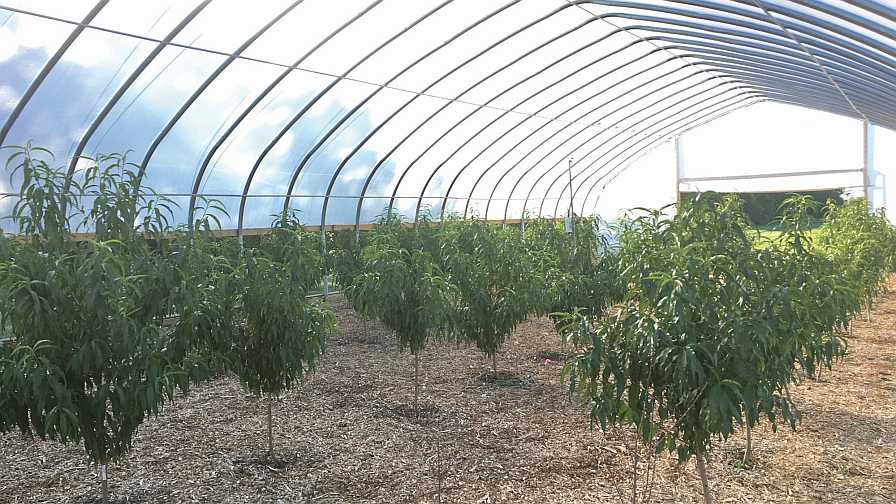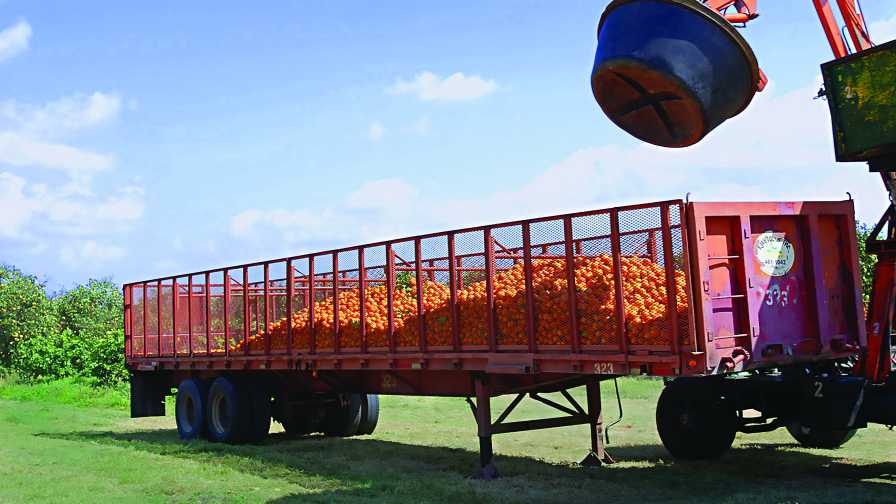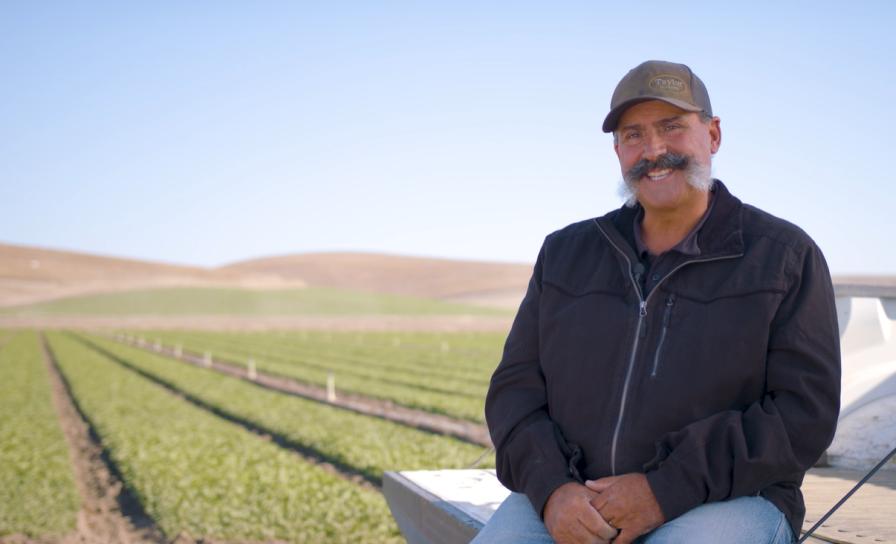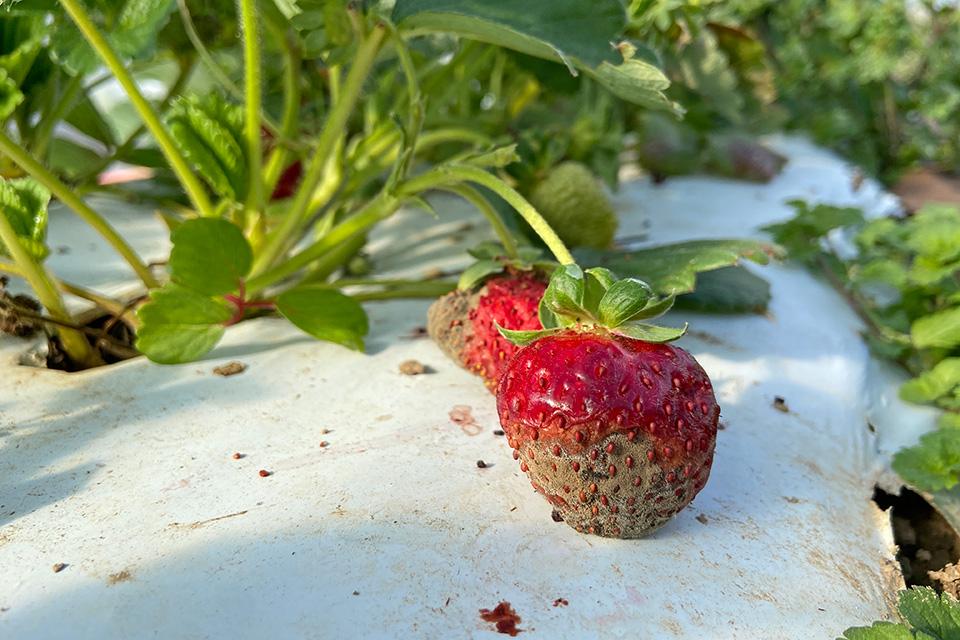How Growing Stone Fruit in High Tunnels Can Pay Off

The high tunnel in Diana Cochran’s project is 42 feet wide, by 19 feet high and is 96 feet long with 6-foot sidewalls and with sides that automatically roll up.
Photo by Diana Cochran

When Diana Cochran moved from out of state to take a job as an assistant professor at Iowa State University, she immediately noticed Iowa’s strong agritourism industry. Rather than farming to fill grocery shelves, most growers find it more profitable to produce a variety of fruits and vegetables for sale at their own farm stands or local markets.
“A lot of people grew up on a farm here,” Cochran says. “Even as people have moved to the cities, many still take their families to look at these farms and pick apples or strawberries or go to a pumpkin field as they did as a kid.”
Some farms even offer attractions like train rides or summer camps. Others attract outside tourists with bed and breakfasts and wedding venues.
Iowa’s tendency for late spring frosts, which grows more pronounced with climate change, also makes an agritourism business model attractive to growers. Most have taken losses when trying to compete with out of state farmers for mass market shelf space.
One fruit in particular that growers are able to sell at a high premium is peaches. However, peach trees don’t always survive Iowa’s low winter temperatures or spring frosts or produce fruit. Currently, growers just plan on replacing some trees every year.
While this may not seem practical, most growers find it acceptable. But Cochran thought there may be an even more lucrative solution.
Growing Inspiration
During a trip to China in grad school, Cochran remembered seeing local growers farming in high tunnels.
“That intrigued me,” she says.
With a profit-sharing program available, some Iowa farmers took the plunge, also purchasing tunnels to grow annuals like tomatoes. The high tunnels can protect produce from cold weather by typically remaining 5 to 10 degrees warmer than outside. Cochran wondered if producing perennials like peaches in tunnels might also make better economic sense for Iowans.
She decided to do some research. Cochran explained that high tunnels come as kits and are sold by many different companies. She suggests choosing a local provider because shipping can be expensive. Tunnels consist of steel posts covered in plastic. Hers is a gothic-style model, spanning 42-feet wide by 96-feet long with arched walls that reach 19 feet at their tallest point. Cochran estimates that most high tunnels range between $6,000 and more than $15,000, depending on size.
In 2016, Cochran and her team set up two plots of peach trees, one in the tunnel and one outside in the ground. For research’s sake, she made every attempt to keep all variables the same between plots. Each includes 48 trees planted the same day and with equivalent plant density (10 feet between rows, 5 feet between trees), perpendicular V training system, and fertilization. Irrigation methods are also kept as similar as possible.
“I don’t want to recommend using a tunnel to grow peaches when I can’t necessarily, without a doubt, say it provides better results than growing in the field,” Cochran says.

Two varieties of peaches and two varieties of nectarines were planted in Diana Cochran’s stone fruit under high tunnel project. Trees were spaced 5 feet apart and 10 feet between rows in a perpendicular-V system.
Photo by Diana Cochran
Major Growth
One aspect Cochran wanted to examine was if the trees in the tunnel would have too much growth, causing bud shading and therefore limited fruit production. While the trees in the field approached 10 ft in their first year, the tunnel trees grew to more than 15 feet.
“The difference was night and day,” she says.
But, because the trees have yet to produce fruit, the team cannot measure shoot to fruit ratio to see if they’ll produce higher yields.
Cochran is also watching to see if the warmer temperature of the tunnel affects how well the trees can acclimate to the cold. Trees usually “harden off” for winter, to prepare for a freeze. The tunnel’s sides use an air temperature sensor to automatically raise and lower according to temperature changes. Cochran says her team lowers the sides once the trees have fully dropped all their leaves to get as much natural acclimation as possible. Then, they don’t turn the system on again until temperatures start fluctuating later in the year.
However, last year the tunnel’s sides were accidentally left open during one of the coldest snaps of the year, which Cochran suspects may contribute to the fact that the trees haven’t produced fruit. But she had started to see a few flowers develop this past spring, which makes her hopeful for fruit in the trees’ now third growing season.
Although Cochran tries to keep irrigation levels the same between the outdoor and tunnel plot, doing so can be challenging. The tunnel’s irrigation system can also be automated. Cochran keeps it on a timer to water at the same times as the plot outside. She also tries to match watering when it rains but does not go as far to over-irrigate the high tunnel-grown trees during wet years, as the fields flood during heavy rain. Also, the threat of freezing pipes can lead growers to turn off irrigation during winter. This happened to Cochran’s plots, resulting in dryer trees than she would have liked. The system can be set to irrigate based on soil moisture levels, which Cochran ponders trying at some point.
Cochran used a hodgepodge of different cultivars on various rootstocks for the trial, including ‘Contender,’ ‘Fantasia,’ ‘Red Gold’ and ‘Redhaven’ grafted onto Bailey’s rootstock, which was released in Iowa and is said to be more cold hardy. But with the large tree growth, using dwarf rootstocks would provide better size control. A quad-V training system is another possible route to control tree size. Cochran purposely left some space in the tunnel to conduct such tests in the future.
Still Early
With so many variables to study, Cochran doesn’t recommend any growers run out tomorrow and purchase tunnels to start growing peaches.
“There’re a lot of things that factor in,” she says. “I don’t want to ever cost someone more money. Do I think it’s feasible? Absolutely. Do I think we still have a lot of things to work out? Absolutely.”
For example, there are more costs to consider when growing perennials in high tunnels than there are with annuals.
“With annuals, you don’t have to wait to get your return,” Cochran says. “With perennials you plant and you’re lucky if in three years you get a crop. You have to weigh the costs. Are you going to get the price point you’ll need from it? Less is more. If you don’t have to use a tunnel, you shouldn’t because it’s just an added cost.”










